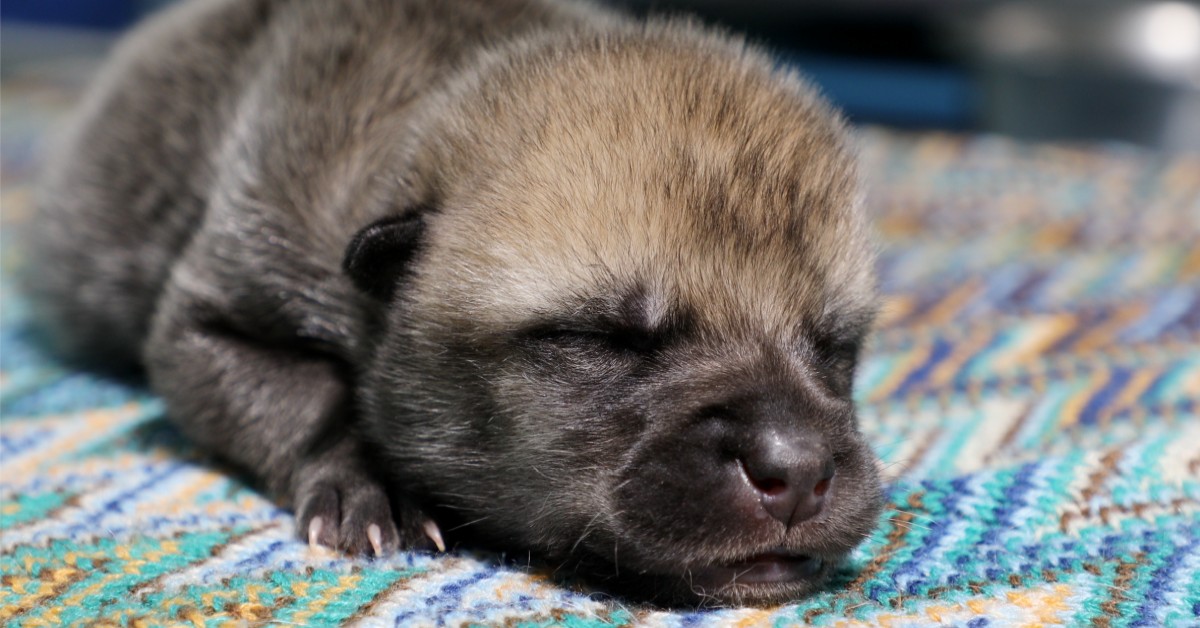An important step has been made in pioneering conservation of endangered species through cloning technology.

Chinese pet-cloning company Sinogene Biotechnology has announced the birth of the world’s first cloned Arctic wolf (Canis lupus arctos), Live Science reports. According to experts, its birth is a big leap forward in artificial breeding of more rare and endangered animals.
Maya, the cloned female wolf pup, and her surrogate beagle mother were unveiled to the world in a brief video at a press conference held September 19, according to Chinese news site Global Times. The animal was born on June 10 in a laboratory in Beijing, 100 days before the video was released.
To clone Maya, the scientists collected DNA collected from a fully grown Arctic wolf, also called Maya, that died in captivity at Harbin Polarland wildlife park in northeast China. The original Maya was born in Canada but was then shipped to China in 2006, and died of old age in early 2021.
“To save the endangered animal, we started the research cooperation with Harbin Polarland on cloning the arctic wolf in 2020. After two years of painstaking efforts, the arctic wolf was cloned successfully. It is the first case of its kind in the world,” Mi Jidong, general manager of Beijing-based Sinogene Biotechnology said at a press conference in Beijing.

The research team performed somatic cell nuclear transfer (SCNT) to create 137 Arctic wolf embryos by fusing skin cells from the original Maya with immature egg cells from dogs. 85 of those embryos were then successfully transplanted into seven beagle surrogates. However, from those transplanted embryos, only one developed fully during pregnancy.
The reason why beagle surrogates were used for the experiment is that there were simply not enough female wolves in captivity for the scientists to use for the experiment. But since dogs share enough DNA with wolves, the embryo could be successfully gestated by the beagle mother.
While for now Maya is staying with her surrogate mother, she will will eventually be transferred to Harbin Polarland to live with other Arctic wolves. The park’s management believe Maya will have to be slowly introduced to the rest of the pack because of her isolated upbringing.
Sinogene also recently revealed that a second Arctic wolf clone, created using DNA from an unknown male, was born on September 22.

Normally, Sinogene specializes in cloning dead pets, such as cats, dogs and horses, for private clients. But the company now intends to use its expertise to help clone endangered species for conservation purposes. The present experiment was the first step to achieve this goal.
This is not the first time an endangered species has been cloned by scientists – in 2020, for example, U.S.-based non-profit conservation organization Revive & Restore successfully cloned an endangered black-footed ferret (Mustela nigripes). This was a groundbreaking step in the recovery of endangered species that could help address genetic barriers faced by many imperiled wildlife.

Scientists have even taken the first steps towards bringing back extinct species: recently, the University of New South Wales’ Lazarus Project announced they have reproduced the genome of an extinct Australian frog species, the gastric brooding frog. Although none of the embryos survived beyond a few days, genetic tests confirmed that the dividing cells did indeed contain the genetic material from the extinct frog.
Back in 2003, Spanish scientists successfully cloned a Pyrenean ibex, a species that had been extinct since 2000. However, the newborn animal only lived for about 10 minutes, making it the only animal that went extinct twice.
In a more commonly known experiment, researchers at Kindai University in Japan managed to extract nuclei from a 28,000-year-old woolly mammoth’s cells and transplant them into mouse cells, after which they started started to show “signs of biological activities.”
According to cloning advocates, the main benefit of cloning endangered species is that this way, genetic diversity can be maintained within a species – as proved by the cloning of the endangered ferret. The birth of Maya is another step in this direction.
